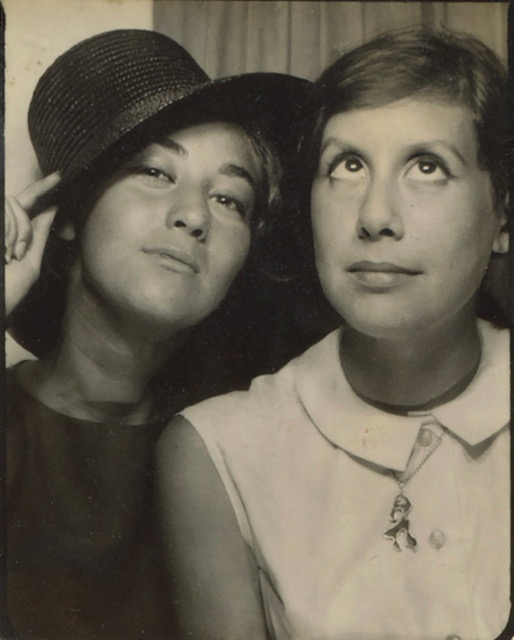One day at the Alzheimer’s day program he attended, Herman suddenly got up and left the room. As he charged down the hall and out the front door, Wendy, the program’s director, ran after him calling, “Herman, stop!”
She caught up with him at the edge of the parking lot. When she grabbed his arm, Herman swung around and punched her in the mouth.
This could be the quintessential tale of how not to approach someone living with dementia (not from the back and not by grabbing him), but it is also the tale of an innocent misperception.
The incident took place in the late 1980s when not as much thought was given to the best way to approach someone living with Alzheimer’s. Wendy was otherwise a natural in relating to people in the group.
A member of the church where the program was held had volunteered to bring her two toddlers to visit once a week. The children engaged freely with the clients and were an immediate hit. Herman was one of those who gazed most tenderly at the youngsters.
It was right after the children and their mother had departed that morning that Herman abruptly left the room. It turned out he felt such love for the children that he believed they were his own and “that woman” was abducting them. He was rushing to rescue them and certainly wasn’t going to let Wendy impede him. Herman reacted just as many of us would have in the situation he was imagining.
Our view of reality is only as accurate as our perceptions and our ability to interpret them. The person living with Alzheimer’s may have many perceptive impairments and a decreased ability to retain facts and make good judgments. All that can make it hard for him to interpret his world correctly.
Some misperceptions in dementia are caused by failure to recognize faces or objects.
When my mother had Alzheimer’s and was living with me, she came to me one day and told me there was someone in her bathroom. Given that she and I were the only ones at home, I was puzzled and followed her to the bathroom to have a look.
“See?” my mother said as she pointed to the raised toilet seat with tubular aluminum arms. “They left their walker there!”
It was a toilet seat she had been using for several months. It hadn’t changed, but somehow her perception of it had. I knew then that I couldn’t count on her to reliably recognize it as a toilet seat, so I replaced it with a raised seat without the aluminum arms that misled her. I wanted to avoid consequences that would have embarrassed her and made more work for me.
A woman in one of the support groups I lead told us that her husband had taken to urinating in the corner of their bedroom. She discovered why when she followed him one morning to the bathroom. He entered, but as soon as he saw himself in the mirror, he turned and went out, telling her, “Someone’s in there.” He no longer recognized his own face. She solved the problem by covering the mirror.
Misperceptions can be a result of visuospatial deficits, such as when people with dementia are afraid to step onto a patterned rug because the design looks three-dimensional to them. They’re afraid of stumbling on the objects they see there.
Memory loss and a tenuous grip on facts can also cause the person with dementia to misinterpret situations.
The most common occurrence in this category could be called “Someone stole my wallet!”
The sense of insecurity that most people living with dementia feel prompts them to hide their most precious belongings—and a lot of other things too. Their memory loss means they can’t find them again. Most of us have done something similar—found such a good place for something that we have trouble finding it. We need to mentally retrace our steps to retrieve it.
But people living with Alzheimer’s have no memory of hiding the thing they value, so they are unable to retrace their steps. If you don’t remember hiding your diamond ring, what’s a good explanation for why it’s missing? It’s logical: someone must have stolen it.
It doesn’t help to say that “Nobody stole your ring” because they know someone stole it.
Caregivers can help the most by offering empathy. Say, “I know how much you love that ring. I’d be upset too. Let’s look for it together.”
And never automatically discount the version held by someone with dementia.
Elsie raised a ruckus every day in the dementia unit at the nursing home where she was a new resident. She would go out in the hall and shout, “Someone stole my clothes! Help! Someone stole my clothes!”
One of the resident assistants would come, lead her by the hand into her room and open the closet. “See? There are your clothes.” This seemed to satisfy her for a little while, but then she would do it all over again.
The head nurse finally decided to call Elsie’s family. She told her daughter-in-law, Kim, what was going on.
“Oh! It’s my fault!” said Kim. “When we were getting her ready to come to the nursing home, her clothes were so old fashioned and shabby, I went out and bought her all new clothes. I thought she wouldn’t notice.”
Elsie was right. Someone had stolen her clothes—and more.
It was everyone else whose perceptions were wrong: the staff at the nursing home, who initially assumed that, because she had Alzheimer’s, Elsie must be mistaken; and, most egregiously, her daughter-in-law, who, though intending to be generous, was operating under the unconscious assumption that Elsie was now less than a person, no longer someone with preferences of her own and rights. Kim treated her more like an object she could do with as she liked.
Luckily Kim hadn’t yet given away Elsie’s clothes, so she packed them up and brought them in to her. The joy and relief on Elsie’s face made clear that she was still a person who could feel, prefer and care.
Thirty years ago, caregivers were advised to orient their loved ones to reality as a way to improve their cognition and behavior. This advice is now controversial. Some studies have shown positive results, others not. When I tried it with my mother, it backfired and made her more anxious.
I think focusing on cognition is inevitably a losing game. I suggest a different kind of reality orientation.
What if we tried harder to orient ourselves to the reality of people living with dementia? What if we tried to see the world through their senses, their perceptions?
Like the wife who followed and observed her husband entering the bathroom, we might come to understand their interpretation of events. We might learn what frightens them and why, or discover why they sometimes resist what we want them to do.
Then maybe we’d be better at helping them navigate a world that challenges them in ways we only partly understand.
At the very least, because we would be more present and engaged with them, they’d know that they count and know we care. And that, in the end, is what they want.
Maggie Sullivan has come to know Alzheimer’s intimately. She was caregiver and advocate during the eight years her mother lived with the disease. For the past 30 years, she has facilitated caregiver support groups for the Alzheimer’s Association, learning from the experience of more than 300 members of those groups. The opinions she expresses here are her own. Maggie is also a writer whose essays and articles have appeared in the New York Times and elsewhere.



